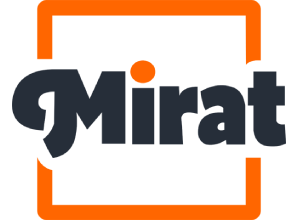As a result of the government’s “cloud-first” policy, a recent study found that more than half of the USA’s public services employ hybrid infrastructure, which means organizations are gradually migrating their systems and facilities to the cloud as this process guarantees network visibility as well as network analyses and monitoring.
However, connecting dissimilar systems can dramatically increase the complexity of a Hybrid IT environment. For example, many IT teams will be aware of the difficulties of investigating a service interruption and choosing to spend more time finding the cause of the problem than taking the necessary measures to fix it.
Hybrid IT implementation and management presents a wide range of issues, including this one. As a result, how might public institutions achieve the most of their hybrid IT expenditures to enable innovation capability and digital transformation alongside stability, performance, and security through cloud visibility?
MIRAT is a revolutionary artificial intelligence-backed ITSM module that offers startups, enterprises, and medium businesses the opportunity to invest in an affordable and modern on-cloud tool to track their workflows. Grab your 14-day free trial version is available on the Mirat.ai website today!
Cloud optimization is part of Hybrid IT, and it isn’t a far-fetched idea but a realistic approach.
Hybrid IT has gone from a trendy concept to a reality in the last few years. Its usefulness, applicability, and potential to build new capacities, services, and solutions are increasingly being recognized by organizations. “Hybrid” refers to the combination of on-premise and cloud-based services, and it can comprise any combination of software-, infrastructure- and platform-based alternatives with cloud Implementation.
When it comes to developing and integrating on-premises and cloud technologies, one of the most common challenges teams encounter is ensuring that interested parties inside and outside the IT department can accept new services and solutions. When other goals prioritize education and training, it can be easy to overlook the importance of these efforts, which can lead to users who are ill-prepared to take advantage of emerging technologies.
Chaitanya mentions that “When implementing hybrid solutions, several experts recommend breaking up an organization into two parts: a “on-premises” and a “cloud” section.” Many employees in the organization, including those in finance, HR, and compliance, could benefit from learning a little about how on again and cloud services work together to achieve these goals.
The importance of education and training cannot be overstated when it comes to maintaining the right IT environment.
Cloud optimization software like MIRAT is self-explanatory, and all employees can be trained about it.
However, monitoring is one of the most significant hurdles to establishing an efficient hybrid IT architecture. Hybrid infrastructures are very simple to configure, but service monitoring remains one of the most important jobs for an infrastructure team to do. Many aspects of the hybrid cloud appear to be typical enterprise resources, such as storage and computing. Chaitanya Kumar, CEO of MIRAT, says that “in the private data center, monitoring agents and integration provide precise information about anything from the hardware to the host operating system, the guest, and the program, whereas this information is not available in the public cloud. Many companies devote years to identifying and strengthening these systems”.
Cloud visibility and network monitoring are two indispensable aides
The mean time to resolution for services affected by infrastructure failure can be lowered thanks to a professional approach to surveillance processes and technologies. It becomes increasingly difficult to link specific hardware malfunction with service availability when more levels of abstraction are added, to the point where efficient monitoring becomes even more critical.
A greater understanding of the underlying infrastructure can be gained by using monitoring tools. A good example of this is how architects might use monitoring data to prioritize potential investment plans. In addition, monitoring tools allow for the placement of workloads to be planned based on the growth of the organization and an awareness of the hybrid infrastructure.
For IT organizations, hybrid IT is a well-established and increasing trend, and they now face a real choice: either embrace it fully or see it as just a step on the way to full cloud adoption. To maximize system performance and prevent downtime while also planning for future needs, public sector organizations should incorporate extensively and focused monitoring capabilities into their approach to monitoring.
Media Contact
Company Name: MIRAT | NoveI Inductive Reasoning Software Pvt Ltd
Contact Person: Mr. Chaitanya Kumar
Email: Send Email
Phone: 9640300095
Address:Road no 10, 4th Floor, Nirmalam 490 Jubilee Hills
City: Hyderabad
State: Telangana, 500033
Country: India
Website: https://www.mirat.ai/

